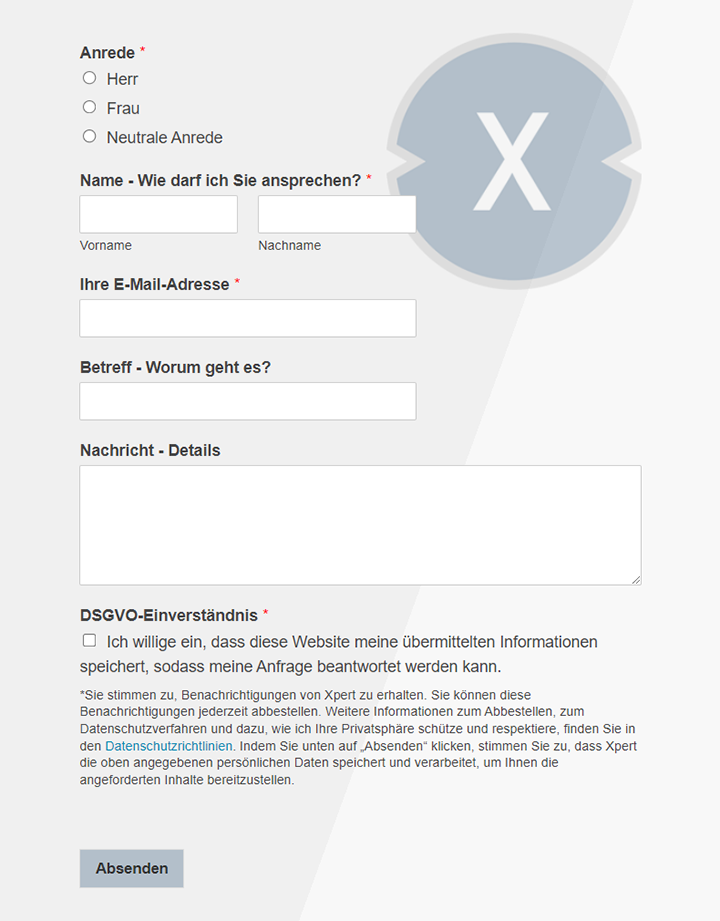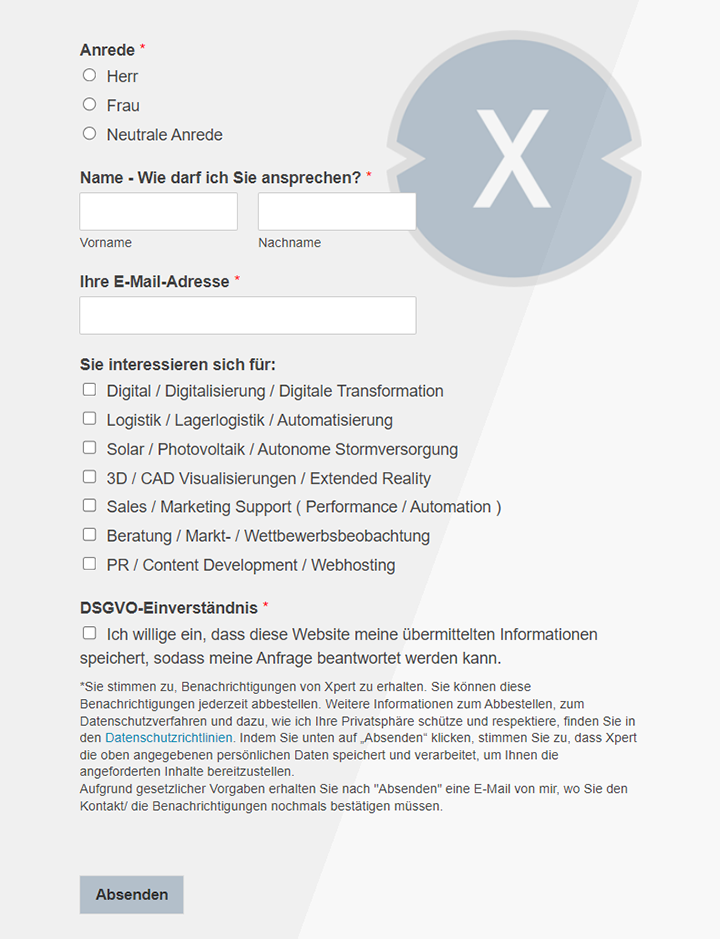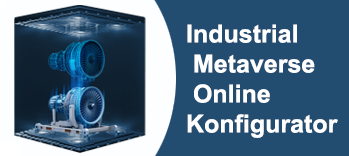Smart Glasses Miniaturization: Mini laser modules as a key technology for more compact and lighter AR glasses
Xpert pre-release
Language selection 📢
Published on: May 8, 2025 / update from: May 8, 2025 - Author: Konrad Wolfenstein

Smart Glasses Miniaturization: Mini laser modules as a key technology for more compact and lighter AR glasses-Image: Xpert.digital
Pioneer for AR glasses suitable for everyday use: Focus on compact laser modules
Technological milestones: mini laser modules and their importance for smart glasses
The miniaturization of laser modules is considered one of the central technological drive springs for the next generation of Smart Glasses. While previous models are often disappointed by chunky designs, high weight and limited battery life, the expectations of everyday augmented reality glasses (AR glasses) are disappointed, enabled new, extremely compact laser modules for the first time that can measure themselves in shape factor and comfort with conventional glasses. Leading companies such as TDK and AMS Osram have developed mini laser modules in recent years that are not only significantly smaller and lighter, but also have low energy consumption and high optical quality. These innovations open up new opportunities for the mass market because they address central challenges such as energy efficiency, image quality, integration into fashionable glasses frames and individualizability. The present analysis illuminates the technological development, the challenges and opportunities of miniaturizing laser modules and their importance for the future of smart glasses.
Suitable for:
- Extended Reality: XR-Tech comparison of AR glasses technology - Orion glasses from Meta and the full-color laser module (FCLM) from TDK
Technological background and market overview
Historical development and status quo from smart glasses
Smart Glasses, especially those with augmented reality functionality, have undergone remarkable development in the past ten years. Earlier attempts such as Google Glass or Snap Spectacles showed the potential of the technology, but often failed due to practical hurdles such as inadequate miniaturization, high performance intake and limited suitability for everyday use. The first generations were mostly chunky, offered a limited field of vision and were not able to prevail in the consumer or in the professional area. The reasons for this were mainly the size and weight of the optical components, the need for large batteries as well as the limited image quality and visibility of the projected content in daylight.
In recent years, however, market dynamics have changed noticeably. Companies such as META, Apple and various start-ups have developed prototypes that are already much more portable due to lighter materials and improved display technologies. Nevertheless, the integration of the projection unit-in particular the laser modules-remained a central obstacle for a real breakthrough in the consumer market. The current developments in the area of miniaturizing laser modules therefore mark a turning point that opens the door to compact, light and fashionable smart glasses.
Importance of miniaturization for AR glasses
The miniaturization of laser modules is not only a question of design, but also has fundamental effects on functionality, energy efficiency, comfort and ultimately the acceptance of smart glasses in everyday life. Smaller laser modules make it possible to accommodate the entire electronics in glasses frames that are hardly distinguished from conventional sun or correction glasses. At the same time, the weight of the glasses is significantly reduced, which increases comfort and enables longer usage times without signs of fatigue.
Another advantage of miniaturization is lower energy consumption. Modern mini laser modules, such as those developed by TDK and AMS Osram, only require a fraction of the energy of conventional projection systems, which allows longer battery life and smaller, lighter batteries. In addition, the compact design improves the optical properties, for example by a more precise alignment of the laser rays and better integration into the overall system of glasses.
Market relevance and outlook
The market relevance of the miniaturization of laser modules is not least evident from the fact that leading companies in the electronics and optics industry invest significant resources in the development of corresponding technologies. TDK, AMS Osram and other actors have presented prototypes and market maturity products in recent years that enable the integration of full-color laser modules into commercially available glasses frames for the first time. This developments are seen by experts as a decisive step for the breakthrough of smart glasses in the consumer area, since they create the basis for fashionable, everyday and functionally convincing AR glasses.
Technological foundations of the mini laser modules
Suitable for:
- TDK's commitment to advancing AR/VR technologies with Mojo Vision, Planar Lightwave Circuits and QD Laser
Principles of laser projection in smart glasses
The projection of images in Smart Glasses is mainly carried out by laser beams, which are directed to the retina of the user or on a wave conductor display via special optical systems-mostly Mems-based mirrors or planar Lightwave Circuits (PLC). In contrast to classic display technologies such as LCD or OLED, laser projection systems offer the advantage that they always create sharply focused images, regardless of the user's prescription. This is particularly important for AR applications in which digital content is to be seamlessly shown in the real field of vision.
The basic principle is that an RGB laser module (consisting of red, green and blue laser diodes) generates light that is directed via a MEMS level or a PLC to the desired projection surface-usually the retina or a transparent wave guide display. The laser intensity and the mirror movement are controlled synchronized, so that the desired color and brightness can be generated per pixel (pixel). Modern systems enable millions of colors and a wide range of vision with minimal energy consumption.
Advances in miniaturization: TDK and AMS Osram
The recent breakthroughs in the area of miniaturization were largely achieved by companies such as TDK and AMS Osram. In cooperation with QD Laser, TDK developed a full color laser module that is smaller than a fingernail with dimensions of only 9 mm length and 1.9 mm wide. The integration of Planar Lightwave Circuits that were originally developed for telecommunications enabled a drastic reduction in size with high optical quality.
The AMS Osram Vegalas ™ module also sets new standards in terms of miniaturization. With a volume of only 0.7 cm³, it is compact enough to be integrated into standard glasses frames. The combination of three powerful laser diodes (red: 640 Nm, green: 520 Nm, blue: 450 Nm) in a hermetically sealed housing ensures a high level of color, longevity and insensitivity to environmental influences.
Energy efficiency and optical quality
A central feature of the new mini laser modules is their extremely low energy consumption. While conventional projection systems based on LCD or mini-LCD base often require several hundred billiwatt, modern mini laser modules work in the microwatt area. This is achieved through the targeted control of the laser rays and the high efficiency of the laser diodes used. At the same time, the optical quality remains at a high level: the modules offer high brightness, a wide range of colors and precise focusing, which is particularly important for use in daylight and in changing environmental conditions.
Integration into the overall system of the smart glasses
The miniaturization of the laser modules is only of practical use if it goes hand in hand with an equally compact integration into the overall system of glasses. In addition to the laser modules, this also includes the power supply, control electronics, sensors and, if necessary, other optical components such as wave conductors or MEMS levels. Modern designs therefore rely on highly integrated modules that combine several functions in a single component and thus further reduce the complexity and space requirements.
Challenges and solutions in miniaturization
Technological hurdles: heat, precision and reliability
The miniaturization of laser modules brings with it a number of technical challenges. One of the greatest hurdles is heat management: Despite high efficiency, laser diodes create a significant amount of heat, which must be reliably dissipated in a compact housing in order to ensure the lifespan and performance of the modules. Innovative housing designs, hermetic seals and new materials help to master this challenge.
Another critical factor is the precision of the optical orientation. Since the modules are extremely small, the laser beams with the highest accuracy must be aligned with the MEMS levels or wave conductors to ensure distortion-free and sharp projection. Advances in microd production and automated assembly today enable alignment accuracy in the micrometer range, which allows series production of high -precision modules.
The reliability of the modules is particularly important with regard to the consumer market. The modules must not only have a long service life, but also be insensitive to dust, moisture and mechanical stress. Hermetically sealed housing and robust materials are therefore standard for the latest generations of mini laser modules.
Manufacturing technologies and automation
The production of mini laser modules requires highly precise manufacturing technologies and extensive automation. Modern production lines enable the assembly of a single laser this in just a few seconds - a process that is more than a hundred times faster than with conventional systems. This not only reduces production costs, but also enables the scaling to high quantities, as required for the consumer market.
The integration of Planar Lightwave Circuits (PLC) and MEMS technologies into the modules places additional requirements for production. Close tolerances and precise coordination of the individual components are required here in order to achieve an optimal optical performance. However, progress in semiconductor production and microsystem technology have made it possible to master these challenges and to implement the production of miniaturized laser modules at an industrial level.
Energy supply and system integration
A central goal of miniaturization is to reduce energy consumption to enable smaller and lighter batteries. Modern mini laser modules are so efficient that they can be operated with batteries that can be accommodated in a conventional glasses frame. At the same time, integration into the overall system of glasses requires intelligent control of the energy supply to ensure an optimal balance between brightness, term and security.
The system integration also includes the integration of sensors, for example for eye tracking or gesture control, as well as wireless communication modules for connection to smartphones or other devices. The miniaturization of the laser modules creates the necessary space for additional components without affecting the total weight or comfort.
🎯🎯🎯 Benefit from Xpert.Digital's extensive, fivefold expertise in a comprehensive service package | R&D, XR, PR & SEM

AI & XR 3D Rendering Machine: Fivefold expertise from Xpert.Digital in a comprehensive service package, R&D XR, PR & SEM - Image: Xpert.Digital
Xpert.Digital has in-depth knowledge of various industries. This allows us to develop tailor-made strategies that are tailored precisely to the requirements and challenges of your specific market segment. By continually analyzing market trends and following industry developments, we can act with foresight and offer innovative solutions. Through the combination of experience and knowledge, we generate added value and give our customers a decisive competitive advantage.
More about it here:
Progress in miniature technology: Smart Glasses become smart and stylish
Application fields and effects on the design of Smart Glasses
New design options through miniaturization
The drastic reduction in laser modules opens up completely new possibilities for the design of Smart Glasses. While earlier models were characterized by large, striking projection systems, the latest generations can be integrated into fashionable frames that are hardly distinguished by normal glasses. This is a crucial factor for acceptance in the consumer market, since many users value inconspicuous, stylish and everyday designs.
The miniaturization also enables the development of Smart Glasses with a larger field of vision and higher image quality. The compact design of the modules can be positioned closer to the eye, which allows better use of the field of vision and a more realistic representation of digital content. At the same time, there is more space for additional functions such as cameras, sensors or audio modules.
Improved comfort and everyday suitability
A significant advantage of miniaturization is significantly improved comfort. Lighter glasses cause less fatigue and can be worn over longer periods without becoming uncomfortable. The reduction of the weight and the even distribution of the components in the frame contribute to the fact that the glasses sit stable and comfortably even with intensive use.
Everyday suitability is also increased by the longer battery life and the higher robustness of the modules. Modern mini laser modules are insensitive to environmental influences and can also be operated reliably even in changing lighting conditions or in dusty environments. This makes them ideal for use outdoors, at work or in sports.
New application scenarios and individualization
The miniaturization of laser modules not only opens up new design options, but also completely new application scenarios for smart glasses. Through direct projection to the retina, information can be shown, for example, without the user having to change the focus. This is particularly advantageous for applications in navigation, sports or in security -critical situations.
In addition, the compact design enables more individualization of the glasses. Users can choose between different designs, colors and functions without having to compromise on performance. The integration of additional sensors and communication modules is facilitated by the space saved, so that smart glasses can increasingly be used as multifunctional wearables.
Comparative analysis of leading mini laser modules
TDK full-color laser module
The full color laser module developed by TDK in cooperation with QD laser is one of the smallest of its kind worldwide. With dimensions of only 9 mm length and 1.9 mm width, it is smaller than a fingernail and can be integrated directly into commercially available glasses frames. The use of Planar Lightwave Circuits enables precise control of the laser rays and a high color depth. The module is characterized by extremely low energy consumption in the microwatt area and is designed for the direct retina scan, which enables an ever sharp representation regardless of the user's conference.
Suitable for:
- Advancement in XR technology for the Metaverse, AR and VR glasses: full-color laser for 4K smartglasses from TDK
The following table compares central technical data of the TDK module with other leading mini-laser modules:
The table offers a comparison of the central technical data of the TDK module with other leading mini laser modules. The TDK module FCLM has dimensions of 9 x 1.9 mm and a volume of less than 0.2 cm³. It works with variable RGB wavelengths and has energy consumption in the microwatt area. His special features include direct retina scanning and PLC technology. The Vegalas ™ model from AMS Osram, on the other hand, measures 7 x 4.6 x 1.2 mm, has a volume of 0.7 cm³, uses defined wavelengths of 640, 520 and 450 Nm and is hermetically sealed while it integrates the RGB SMT technology. The MEMS-based model of QD laser resembles the TDK module in terms of dimensions, also has a volume of less than 0.2 cm³ and supports RGB wavelengths. Particularly noteworthy is the cooperation with TDK and the functionality for retina scanning.
AMS Osram Vegalas ™ module
The AMS Osram Vegalas ™ module sets new standards in terms of miniaturization and integration. With a footprint of only 7 mm x 4.6 mm and a height of 1.2 mm, it is compact enough to be installed in common glasses frames. The combination of three powerful laser diodes in a hermetically sealed housing ensures a high level of color, longevity and insensitivity to environmental influences. The module is optimized for use in MEMS-based laser scanning systems and enables a high-precision projection with low energy consumption.
A special feature of the Vegalas ™ module is the option of reducing the size of the projection unit in AR and MR glasses by up to half, without compromise on image quality or brightness. This opens up new possibilities for fashionable, everyday and powerful smart glasses.
MEMS and PLC-based systems
In addition to TDK and AMS Osram, other manufacturers also rely on MEMS and PLC-based approaches for miniaturizing laser modules. MEMS levels enable high-precision control of the laser rays and a flexible adaptation of the field of vision. Planar Lightwave Circuits offer additional options for integrating several optical functions in a single component, which further reduces complexity and space requirements.
These technologies complement each other ideally with the miniaturized laser modules and enable the development of smart glasses, which set new standards both in terms of design and in terms of functionality.
Future prospects and open challenges
Further development of miniaturization
Although the current mini laser modules are already significant progress, the potential of miniaturization has not yet been exhausted. Future developments will concentrate on the further reduction of the size, the integration of additional functions and the improvement of energy efficiency. Advances in semiconductor production, new materials and innovative packaging technologies will make it possible to develop even smaller and more powerful modules.
Another focus is on the integration of additional sensors and communication modules to further develop smart glasses into multifunctional wearables. The miniaturization of the laser modules creates the necessary basis for this by providing space and energy for other components.
Security and regulatory requirements
With the increasing distribution of laser modules in consumer products, the focus also focuses on security and regulation. The direct projection of laser beams on the retina requires the highest precision and reliable protective mechanisms to rule out health risks. Manufacturers must therefore adhere to strict security standards and develop innovative protective mechanisms to ensure safe use in everyday life.
In addition, regulatory requirements in various markets must be taken into account that can influence the approval and distribution of smart glasses with laser modules. Cooperation with supervisory authorities and the development of international standards will therefore become more important in the coming years.
Market potential and social effects
The miniaturization of laser modules not only opens up new technological options, but also has the potential to fundamentally change the market for smart glasses. Experts see the next generation of smart glasses a possible replacement of the smartphone as a central mobile device. The integration of augmented reality into everyday life could revolutionize numerous areas of life - from navigation and communication to education and entertainment to medicine and industry.
At the same time, the spread of smart glasses raises new social issues, for example with regard to data protection, social interaction and the effects on public life. The miniaturization of the laser modules helps to ensure that smart glasses become more inconspicuous and suitable for everyday use, which should increase acceptance in the general public.
How miniaturization makes smart glasses suitable for everyday use: innovation through laser miniaturization
The miniaturization of laser modules represents a decisive milestone on the way to compact, light and everyday smart glasses. Leading companies such as TDK and AMS Osram have shown with their innovative mini-laser modules that it is possible to integrate powerful full-color projection systems into commercial glasses without compromise in image quality, energy efficiency or To enter into a comfort. The combination of extremely small size, low energy consumption and high optical quality opens up new opportunities for design, functionality and the everyday suitability of smart glasses.
The current developments mark a turning point for the market of augmented reality glasses and create the basis for broad acceptance in the consumer area. At the same time, manufacturers and developers face new challenges, for example with regard to security, regulation and the integration of additional functions. The next few years will show how fast and to what extent the miniaturization of laser modules will prevail - however, the potential for a fundamental change in mobile communication and interaction is already clearly recognizable today.
Suitable for:
- Market opportunities for the AR workstation: Sightful Spacetop for Windows offers a 100-inch display work space for laptops with AR glasses.
The power of the little laser: Augmented Reality thought new
The miniaturization of laser modules is the key to realizing more compact, lighter and powerful smart glasses. For the first time, the recent technological breakthroughs enable designs that can be measured in shape factor and comfort with conventional glasses, without compromise on image quality or functionality. The integration of highly developed mini laser modules in smart glasses opens up new application scenarios, improves comfort and increases everyday suitability. At the same time, they create the prerequisite for the next generation of mobile devices that could replace the smartphone as a central communication and information medium.
The coming years will be decisive for how quickly these technologies prevail in the mass market and which new applications and social changes result. The miniaturization of laser modules remains the central innovation engine for the future of the smart glasses and the augmented reality as a whole.
We are there for you - advice - planning - implementation - project management
Xpert.Digital - Pioneer Business Development
Smart Glasses & KI - XR/AR/VR/MR industry expert
Consumer metaverse or meta -verse in general
If you have any questions, further information and advice, please feel free to contact me at any time.
I would be happy to serve as your personal advisor.
You can contact me by filling out the contact form below or simply call me on +49 89 89 674 804 (Munich) .
I'm looking forward to our joint project.
Xpert.Digital - Konrad Wolfenstein
Xpert.Digital is a hub for industry with a focus on digitalization, mechanical engineering, logistics/intralogistics and photovoltaics.
With our 360° business development solution, we support well-known companies from new business to after sales.
Market intelligence, smarketing, marketing automation, content development, PR, mail campaigns, personalized social media and lead nurturing are part of our digital tools.
You can find out more at: www.xpert.digital - www.xpert.solar - www.xpert.plus




























